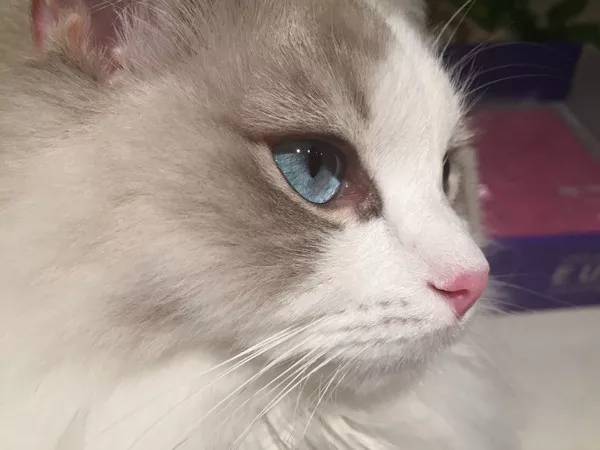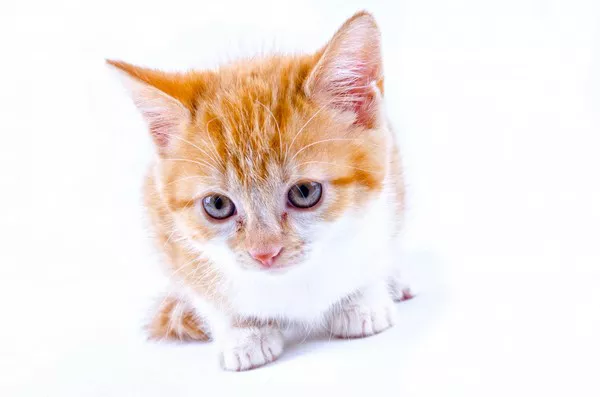Ragdoll cats are known for their striking blue eyes, silky fur, and affectionate nature. These gentle giants can weigh between 10 to 20 pounds, with some males even reaching up to 22 pounds. As a pet owner, ensuring your Ragdoll cat receives the proper nutrition is essential for their health and well-being. But how much should you feed your Ragdoll cat? This comprehensive guide will help you determine the appropriate amount of food, taking into consideration their age, weight, activity level, and overall health.
Understanding Ragdoll Cat Nutritional Needs
Unique Characteristics of Ragdoll Cats
Ragdoll cats are a large, muscular breed with a semi-longhaired coat. They mature slowly, often not reaching full size until they are 3 to 4 years old. Their laid-back and docile nature means they may not be as active as some other breeds, which can influence their dietary needs. Understanding these characteristics is crucial in providing the right nutrition for your Ragdoll cat.
Basic Nutritional Requirements
All cats, including Ragdolls, require a balanced diet that includes proteins, fats, carbohydrates, vitamins, and minerals. Proteins are especially important for cats as they are obligate carnivores, meaning their bodies are designed to derive nutrients primarily from animal sources. Fats provide essential fatty acids and energy, while carbohydrates offer a source of quick energy. Vitamins and minerals support various bodily functions, from bone health to immune system support.
Determining the Right Amount of Food
Factors to Consider
When determining how much to feed your Ragdoll cat, several factors need to be considered:
Age: Kittens, adults, and senior cats have different nutritional needs.
Weight: The ideal weight for your cat will influence the amount of food they require.
Activity Level: More active cats will need more calories than those that are more sedentary.
Health Status: Cats with health issues may have specific dietary needs.
Type of Food: Wet, dry, and raw foods have different caloric densities and nutritional profiles.
Feeding Kittens
Ragdoll kittens are growing rapidly and require more calories per pound of body weight than adult cats. Typically, kittens should be fed multiple small meals throughout the day.
0-6 Months: During the first six months, feed your Ragdoll kitten high-quality kitten food that is rich in protein and fat. Aim for about 4-5 meals a day.
6-12 Months: As your kitten grows, you can reduce the number of meals to 3-4 times a day. Monitor their weight and adjust the portion sizes as necessary.
Feeding Adult Cats
Adult Ragdoll cats (1-7 years) require a balanced diet to maintain their weight and health.
Daily Caloric Intake: On average, an adult Ragdoll cat needs about 20 calories per pound of body weight. For a 15-pound Ragdoll, this would equate to approximately 300 calories per day.
Meal Frequency: Most adult cats do well with two meals per day. Some cats may prefer three smaller meals.
Feeding Senior Cats
Senior Ragdoll cats (7+ years) may have different nutritional needs due to changes in their metabolism and activity levels.
Adjust Caloric Intake: Senior cats often require fewer calories as they become less active. However, some may need more calories if they have difficulty maintaining their weight.
Special Diets: Consider a senior-specific cat food that addresses common age-related issues such as joint health, kidney function, and digestive health.
See Also: Do Bengal Cats Shed a Lot?
Types of Cat Food
Wet Food
Wet food is a popular choice for many cat owners due to its high moisture content and palatability. It can be beneficial for cats who need to stay hydrated or have dental issues that make chewing dry food difficult.
Benefits: Provides hydration, often more appealing to cats, and can help with weight management.
Feeding Amount: The amount of wet food needed will depend on the brand and specific product. On average, a 5.5-ounce can contains about 150-200 calories. For a 15-pound Ragdoll, you might need 1.5 to 2 cans per day.
Dry Food
Dry food is convenient, has a longer shelf life, and can help with dental health by reducing plaque and tartar buildup.
Benefits: Convenient, cost-effective, and good for dental health.
Feeding Amount: Dry food is calorie-dense. Typically, 1 cup of dry food contains about 300-400 calories. For a 15-pound Ragdoll, you might need about 3/4 to 1 cup of dry food per day.
Raw Food
Raw food diets mimic what cats might eat in the wild and can include raw meat, bones, and organs.
Benefits: High in protein, natural diet for cats, and can improve coat and skin health.
Feeding Amount: Raw food diets are highly individualized. It’s important to consult with a veterinarian or a pet nutritionist to ensure the diet is balanced and meets your cat’s nutritional needs.
Monitoring Your Cat’s Weight and Health
Regular Weigh-Ins
Weigh your Ragdoll cat regularly to monitor their weight and ensure they are staying within a healthy range. Rapid weight gain or loss can be a sign of health issues that need to be addressed.
Body Condition Score (BCS)
The Body Condition Score is a useful tool to assess whether your cat is underweight, overweight, or at an ideal weight. The scale ranges from 1 (emaciated) to 9 (obese), with 5 being ideal. You should be able to feel your cat’s ribs without excess fat and see a visible waistline when looking from above.
Adjusting Portions
If your cat is gaining or losing weight, adjust their food portions accordingly. Increase the portion size if they are losing weight and decrease it if they are gaining weight. Always make changes gradually to avoid digestive upset.
Consult Your Veterinarian
Regular veterinary check-ups are essential to monitor your cat’s overall health and address any concerns. Your vet can provide guidance on feeding and help you adjust your cat’s diet as needed.
Common Feeding Mistakes to Avoid
Overfeeding
One of the most common mistakes is overfeeding, which can lead to obesity and related health problems such as diabetes, arthritis, and heart disease. Stick to recommended portion sizes and avoid free-feeding (leaving food out all day).
Underfeeding
Underfeeding can result in malnutrition, weight loss, and a weakened immune system. Ensure you are providing enough food to meet your cat’s nutritional needs, especially during growth periods or if they are very active.
Feeding Low-Quality Food
Not all cat foods are created equal. Low-quality foods may contain fillers, artificial additives, and low levels of essential nutrients. Invest in high-quality cat food that lists meat as the first ingredient and provides a balanced diet.
Ignoring Water Intake
Cats are not always good at drinking water, and dehydration can be a serious issue. Ensure your Ragdoll cat has access to fresh water at all times and consider incorporating wet food into their diet to increase their moisture intake.
Conclusion
Feeding your Ragdoll cat the right amount of food is crucial for their health and happiness. By considering factors such as age, weight, activity level, and health status, you can determine the appropriate portions and types of food for your feline friend. Regular monitoring of their weight and health, along with consultations with your veterinarian, will help ensure your Ragdoll cat thrives. Remember, every cat is unique, and their dietary needs may change over time, so stay attentive to their needs and adjust their diet as necessary.

























